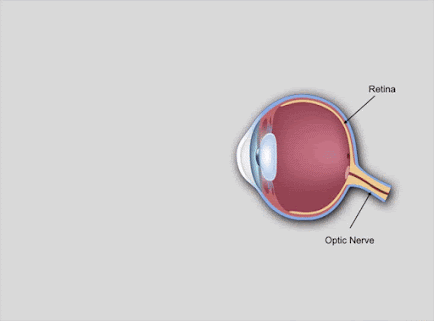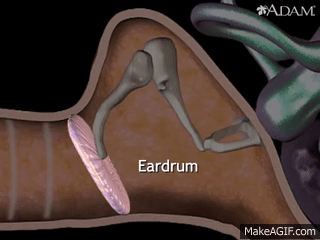How do we see?
Eyes are the sense organs for sight.
• The iris is the coloured part in the front of the eye.
• The pupil is the black circle in the middle of the iris. Light enters through the pupil.
• The retina is at the back of the eye. It turns images into signals.
• The optic nerve takes the signals to the brain.
The brain interprets the signals and we see colour, size, shape and distance.
Our eyebrows, eyelashes and eyelids protect our eyes.
How do we hear?
Ears are our sense organs for hearing.
• You can see part of the outer ear on the outside of your head.
The hole in the centre is called the ear canal. Sound vibrations travel down the ear canal.
• The middle ear is inside the skull. The eardrum and three small bones receive the vibrations and send them to the inner ear.
• In the inner ear, the cochlea receives the vibrations and turns them into signals. The auditory nerve carries the signals to the brain.
• The brain interprets the signals and we hear sounds.
How do we smell?
The nose is the sense organ for smell.
• Air goes through the nostrils and enters the nasal cavities.
• The mucous membrane detects substances in the air.
• The olfactory nerve sends signals to the brain.
• The brain interprets the signals and we smell different odours.
THE SENSE OF SMELL
How do we taste?
The taste buds are the little bumps on the tongue. They are the sense organs for taste.
• They detect food or liquid on the tongue.
• They send signals to the brain through the gustatory nerve.
• The brain interprets the signals and we taste different flavours.
TASTE
How do we feel things we touch?
The skin is the sense organ for touch.
• There are thousands of nerve endings under the skin.
• They capture sensations, such as temperature, texture, light and pressure.
• The nerve endings send signals to the brain.
• The brain interprets the signals and things feel hot, cold, rough, smooth, hard or soft.
 |
| Hot and cold |
Our fingertips have more nerve endings than any other part of the skin.













































No hay comentarios:
Publicar un comentario
Nota: solo los miembros de este blog pueden publicar comentarios.